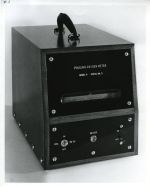
Middle Years: War Work, Peace Work and Protein Structure
Page 5-1
| 1940 | Chemical bond / Antibodies: "A theory of the structure and process of formation of
antibodies" In his essay "Fifty Years of Progress in Structural Chemistry and Molecular Biology," Pauling writes: "My ideas about the structural basis of biological specificity were developed during the years 1936 to 1939...By 1939 I had reached some conclusions about the structure of antibodies and their interaction with antigens. With [Karl] Landsteiner’s encouragement I published a paper on this subject in 1940 and, with the collaboration of [many others], began a series of experiments to check on the ideas." A much-cited paper. View Online: Manuscripts of Articles 1940a.2(Catalogue Vol I. page 155) |
| 1940 | Chemical bond / Biology: "The nature of the intermolecular forces operative in biological
processes" Written with Max Delbrück. Argues that the biologically-specific reproduction of molecules requires complementarity of structure between two molecules. Publications 1940p.3 (Catalogue Vol. I page 112) |
| 1940s | War work In these years, Pauling did government work to assist the war effort. In the laboratories he headed at CIT, investigations were made as part of the attempt to synthesize plasma and antibodies. Pauling also worked on rocket propellants and invented an oxygen meter for use in monitoring the air in submarines. It is interesting to see the volume of things brought to Pauling’s attention, and of those matters on which he worked, while maintaining his other scientific interests. It is ironic to compare this activity with the suspicion of unpatriotic leanings which dogged him in later years. Science 13.001-13.006 (Catalogue Vol. II pages 54-56) Includes handwritten notes on various areas of work, including medical research; correspondence; copies of official reports. View Online: "The Condensation and Oxidation of Gelatin with Glyoxal and Hydrogen Peroxide for the Preparation of a Plasma Substitute (Oxypolygelatin)," 1949. View Online: Manuscripts of Articles 1949a.7(Catalogue Vol. I page 157) |
| 1947 | General Chemistry A textbook that revolutionized the teaching of college chemistry. Instead of just presenting a compendium of facts to memorize and standard experiments to carry out, Pauling’s textbook explained the principles governing chemical bonding and molecular structure. It was the first college textbook to introduce quantum physics to chemistry students. An immensely successful book whose royalties improved Pauling’s lifestyle. Manuscripts and Typescripts of Books 5.004 (Catalogue Vol. I page 270) See also: 1941b1.1, 1941b1.2 for preliminary prototype version of the work (Catalogue Vol. I page 268) View Online: Transcribed video of Dr. Mary Jo Nye's discussion of General Chemistry |
| 1947 | Structure of metals: "Atomic radii and interatomic distances in metals" One of Pauling’s most-cited papers. Publications 1947p.2 (Catalogue Vol. I page 115) |
| 1948-1949 | Varied topics In this period, Pauling made European trips, met with European scientists, and revisited some of his earlier work. Between 1948 and 1949, he published more than 30 papers, on complementarity, metals, antibodies, hemoglobin, and other subjects. (See Hager, Force of Nature, p.332) |
| 1949 | Structure of metals: "A resonating valence-bond theory of metals and intermetallic
compounds" A much-cited paper. Publications 1949p.6 (Catalogue Vol. I page 116) |
| 1949 | Hemoglobin: "Sickle-cell anemia, a molecular disease" A landmark abstract in Science, by Pauling, Harvey Itano, S.J. Singer, and Ibert C. Wells. Pauling was the first to put forward the idea of the cause for a disease being an irregularity at the molecular level. View Online: Publications 1949p.8(Catalogue Vol. I page 116) |
Return to Ava Helen and Linus Pauling Papers Home
Table of Contents
- Introduction
- Ways to Approach the Curriculum
- Using Archival Materials in Special Collections
- Early Years: Education, Teaching and the Chemical Bond
- Middle Years: War Work, Peace Work and Protein Structure
- Part I: 1940-1949
- Part II: 1950-1959
- Part III: 1960-1965
- Later Years: Molecular Disease and Orthomolecular Medicine
- Topical Readings
- Websites Regarding Linus Pauling
- Appendix: General Guidelines for Use of Special Collections Materials
- Acknowledgements



